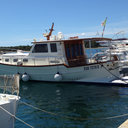[Pregnancies and deliveries in patients with Charcot-Marie-Tooth disease].
Cuvinte cheie
Abstract
Hereditary motor sensory neuropathy (HMSN), also known as Charcot-Marie-Tooth (CMT) disease, is a spectrum of disorders caused by a specific mutation in one of several myelin genes, which results in defects in myelin structure, maintenance and formation. Affected individuals show progressive distal limb atrophy and weakness, often with gait disturbance and deformity of feet and hands. There have been few studies on how CMT disease can affect pregnancy, birth and the newborn. CMT is an independent risk factor for complications during pregnancy and delivery. Patients with CMT have more operative deliveries, malpresentations and postpartum bleeding than the general obstetric population. It is not clear whether the increased prevalence of malpresentation is related to fetal disease, although the disorder typically does not present until later in childhood. Postpartum bleeding from atony may be related to the disease effect on uterine adrenergic nerves. Exacerbation of CMT disease can occur in pregnancy, an effect that may be mediated by increased plasma progesterone level. Observations in an animal model were consistent with these findings as the administration of progesterone resulted in a more progressive neuropathy, while a progesterone antagonist slowed the disease progression. We treated two patients with CMT (type 5 and type X1) at our Department. Both of them had normal course of pregnancy until delivery. Emergency cesarean section was performed in both cases; in one because of malpresentation, contracted pelvis and signs of impending fetal asphyxiation during the second stage of delivery, and in the other one based on neurologist indication. In the latter, uterine atony with profuse postpartum bleeding occurred immediately after cesarean section and emergency hysterectomy was performed according to clinical status.


